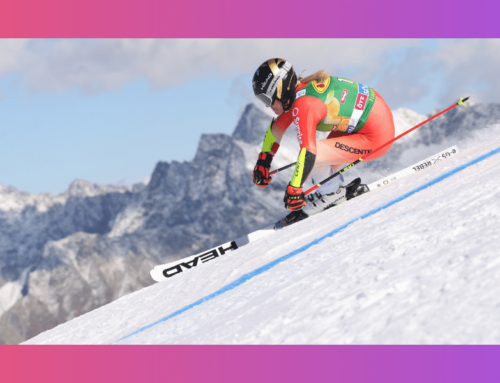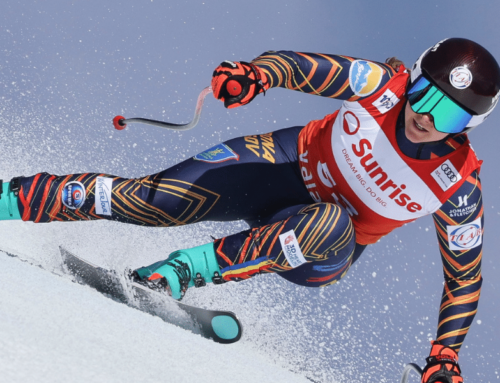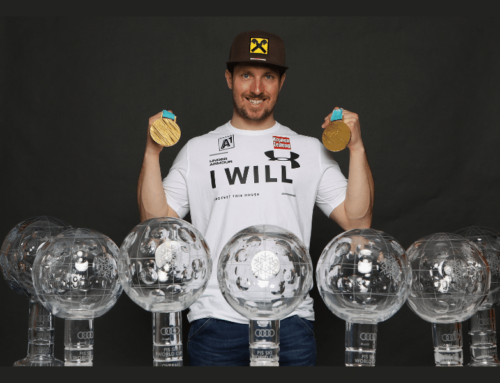USSS Chief of Sport Anouk Patty is right where she belongs
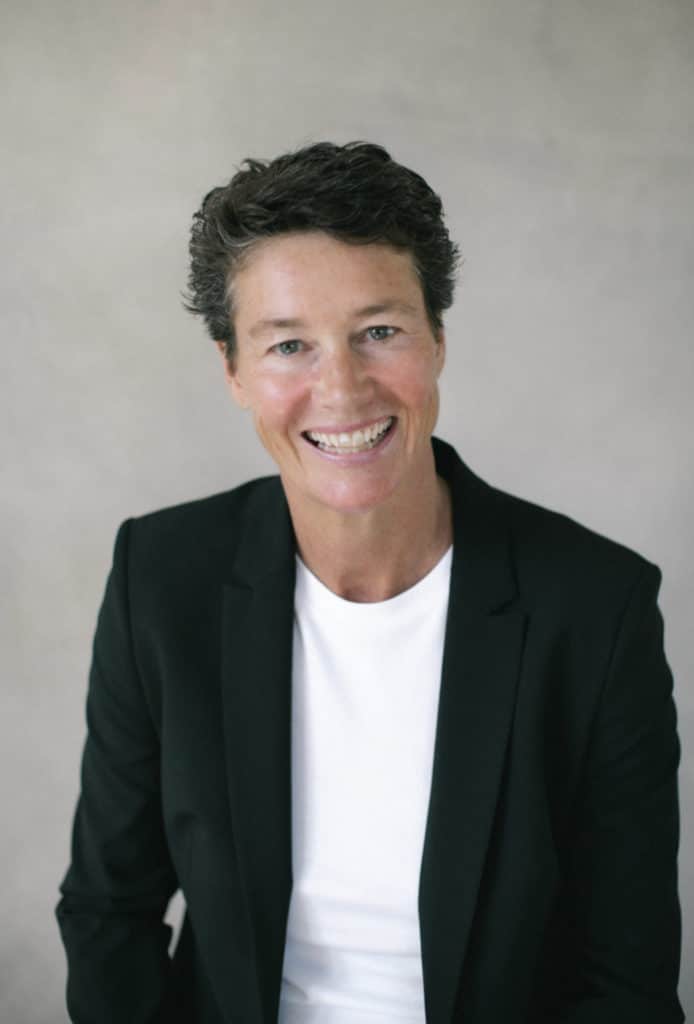
If an NGB was looking for a Chief of Sport, the ideal resume might include some of the following: Former world class athlete and NCAA champion; Ivy League educated MBA with 30 years corporate experience in finance and tech; extensive management and team-building skills overseeing strategic partnerships with professional sports organizations and sporting manufacturers; multilingual; loves to travel; avid recreational athlete in skiing, running, cycling, surfing, tennis and golf.
Anouk Patty’s resume could claim all of the above. The recently appointed USSS Chief of Sport giggles before she says the obvious: “It’s a dream job.”
INTERNATIONAL ROOTS
Patty’s skiing roots run deep and across continents. Her father is French and her mother is Australian. She was born in France. And her parents came to the States in 1970 to be a part of the ski business. Her mother, Cheryl, has had a ski shop in Waitsfield, VT, for 40 years. Her father is also in ski clothing industry, though initially came over with Rossignol, then based in Williston. Anouk and her younger brother Yves grew up in Waitsfield, where they attended GMVS. Anouk qualified for the US Ski Team as a tech skier, and then, at the first hint of success in speed (as was often the case), was moved to the downhill team.
USST PART I
After four or five years on the national team, Patty wanted to go to college and had deferred from Dartmouth. “At that time, you had to do one or the other,” she recalls. “There was no balancing the two.” However, she tried to do both, skiing in the NorAms and nationals her first year at Dartmouth, but with no real support. “It was terrible, and I was not particularly successful in any area.” Going to school also meant losing her US Ski Team family. “It was like I became an instant outsider.”
At Dartmouth, she excelled academically and athletically, becoming a three-time All-American and the 1988 NCAA GS champion, distinctions she would only later fully appreciate. She graduated in 1991 and embarked on her professional life.
PROFESSIONAL CHOPS
After some internships in sports marketing, her intended field, Patty pivoted, taking the well-worn path into investment banking. That included stints at JP Morgan and Bain & Company, during which time she got her MBA at Harvard Business School. Patty developed a strong foundation of quantitative and qualitative analysis and strategic thinking. “I learned how to work really, really, hard,” Patty says. With that foundation, she took her talents to Silicon Valley and spent the next ten years at Intuit, where, while starting a family, she developed her management and leadership skills. For the next ten years, she remained in tech, mainly at HP, and shifted her focus to strategic partnerships—many in the sports world (NFL teams, Adidas, Under Armour)—related to 3D scanning and 3D printing.
RETURN TO SNOW
In addition to skiing, Patty avidly enjoys golf, tennis, mountain biking, running, hiking and surfing. Merging her technology and leadership experience with her passion for sports was satisfying but one step removed from the actual sports. She had never strayed far from the ski world and kept a pulse on its inner workings. When she first retired from racing, she spent time on the Athletes Advisory Council of the USOPC, then was on the board at GMVS. For the past seven years, she has been on the board of POWDR Corp, which owns critical USSS training and competition venues like Copper Mtn, Killington and Woodward. She also maintained close connections to friends and former teammates closely involved with the sport.
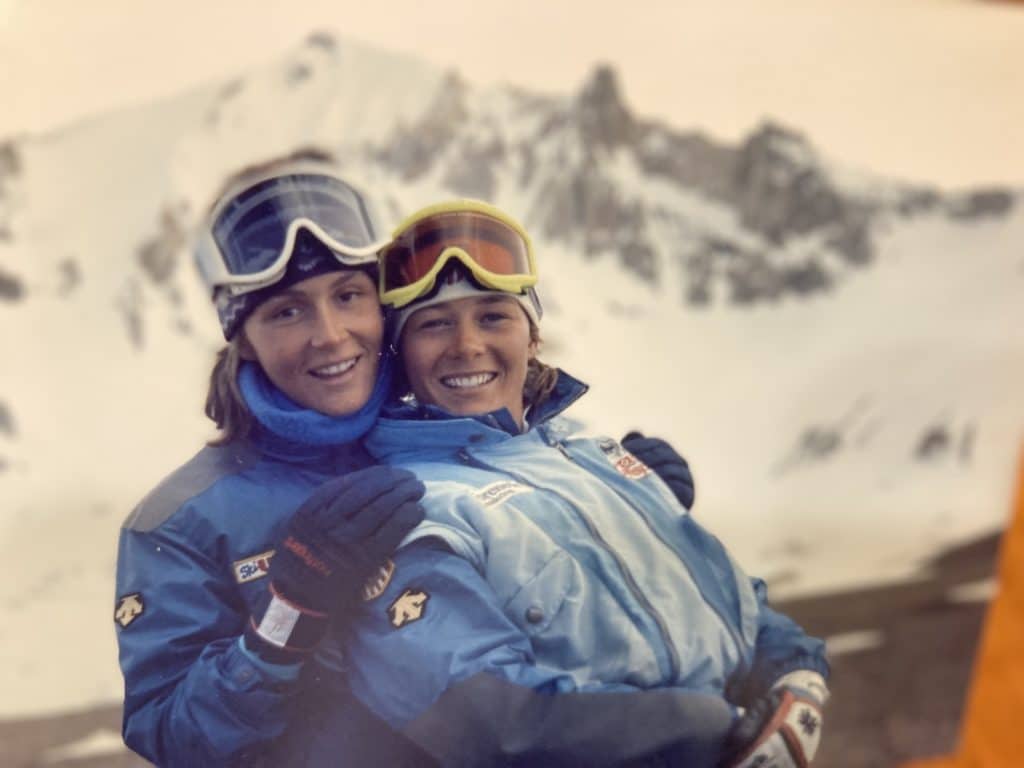
With her kids off to college, the prospect of a leadership role at the US Ski Team—something often suggested by her former teammates—sounded like an appealing challenge. When USSS CEO Sophie Goldschmidt approached Patty about the Chief of Sport position, Patty was ready.
She flew out to Park City and they talked for five hours about the organization and where they would want to take it together. “I felt like it was an interview, but it wasn’t an interview. It was like we were just together mapping out where we wanted to take this.” Patty notes that when taking on a new role, a key factor is making sure that the person you’re reporting to is great, and Goldschmidt checked that box. “She has a great vision, so much experience that she brings to bear and is such an engaging leader. Having me come in and lead the sports side—because I do understand the sport—together, I think we make a really good partnership.”
Patty describes the job as coming full circle, taking the 30 years of work experience, skills and perspective and “applying it in a space that I love and I’m passionate about and that is truly in my DNA. For me, it’s the perfect job.”
HITTING THE GROUND RUNNING
During her first week on the job, Patty was thrown directly into team nominations as well as next year’s planning process and budgeting, all while getting up to speed on all disciplines: Alpine; Cross Country; Snowboard, which includes halfpipe, slopestyle and big air; Freeski, which includes halfpipe, slopestyle and big air; and Freestyle, which is aerials and moguls. “All are very, very different and have very different challenges and opportunities,” says Patty. “That level of complexity is pretty high, and I’m still learning each of them.”
She approaches her task with three priorities. The first is identifying key processes that can be improved. Some will change right away—like quarterly business reviews to provide quick check-ins that help sport directors stay on track throughout the year. Others will change over time, and bringing welcome efficiencies will help provide transparency, visibility and accountability.
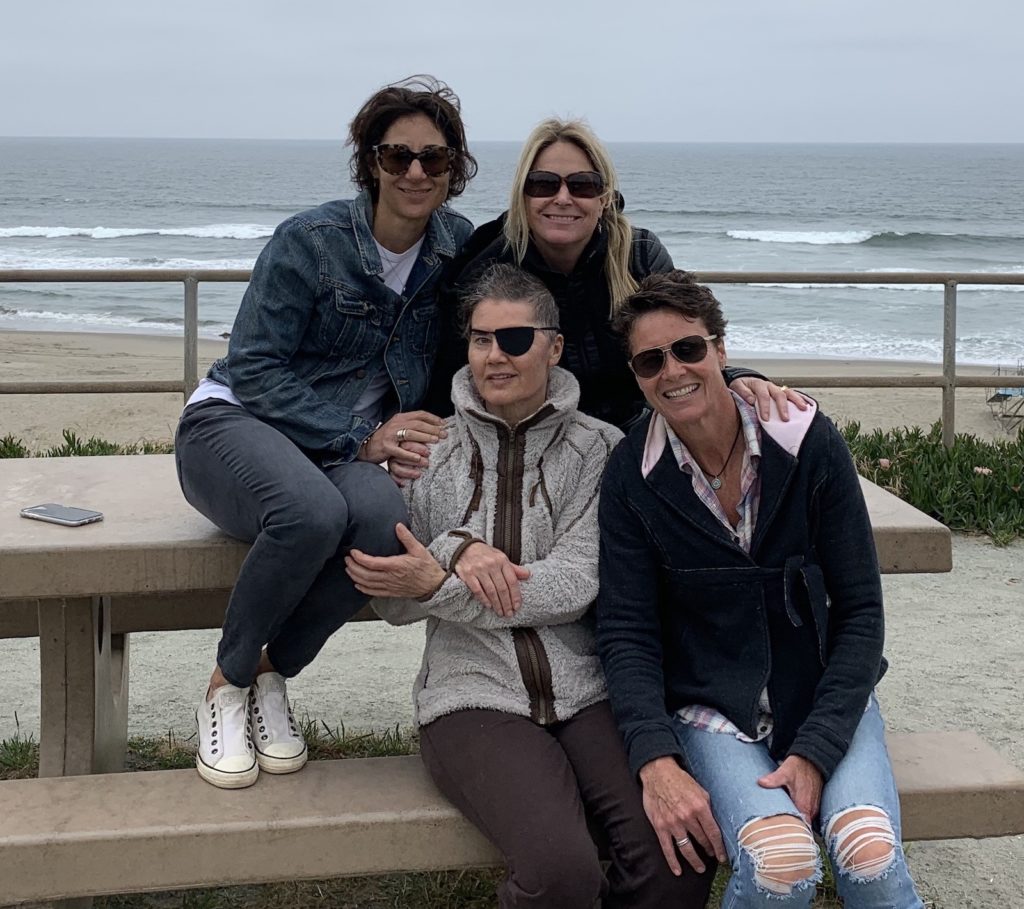
Heidi Voelker
The second priority is staffing. Patty emphasizes making sure the right people with the appropriate experience and expertise also fit the culture of each different sport. By necessity, with half the coaches spread out across the country and in Europe, USSS has a very different type of organizational structure and leadership dynamic than standard corporations. The typical method of influencing culture through regular face-to-face interactions can’t happen, so it’s essential the shared vision is clear and the coaches are a good fit from the start.
Patty is especially passionate about development, and staffing up that area across all the sports with great leadership and coaches. “It’s so strategic to us. We have to build the foundation for the future, today,” she says, and explains that the emphasis on development will involve engaging even more closely with clubs and programs to nurture upcoming talent together.
Her third area of focus has been connecting with the athletes across all sports to get their perspective and feedback. “They’re not only our greatest asset, but they’re also our best source of information,” says Patty. One of the things Patty wanted to do culturally was an open-door policy where coaches and athletes feel safe coming to her with feedback. With 176 athletes, that means a lot of listening. “Scaling that up has been an interesting learning process on how to do that effectively.”
Each sport also has teams within them—by gender and specialty and by level, from development to Olympic level—and they’re all different. To better understand each team’s unique dynamics and culture, Patty will spend time this summer going to the camps and seeing the athletes in person.
ATHLETE DRIVEN
In addition to her professional chops, Patty brings her own athletic experience, which is relevant and personal in her quest to make the organization genuinely athlete-centric. The first task is defining what that term means. To her, it starts with a focus on building a team spirit and a team culture. “I think we’ve moved a little more towards this individual athlete culture, but I want to take it to the next step where it’s the team of athletes where we’re not solving for one individual athlete at the expense of the others.” That involves creating the right sort of optimal support structure for each of those teams and a culture within it where everybody is in this together. “We are the US Ski and Snowboard team. We have to be that.”
Each team has or is putting together a team culture document defining the culture they want. “We want to implement it across all of the different sports, so part of it is taking what’s best practice from one sport and applying it to the others. It’s just being aware and thoughtful about what is right, what is not working, and how we get it to where we want it to be.”
EMBRACING HIGHER EDUCATION
Much has changed since Patty’s competitive days, including the number of athletes pursuing college educations while on the US Ski Team. “Today, 50% of our women’s Alpine team and close to 30% of our men’s Alpine team are going to college,” says Patty, adding that on the cross-country side, all but two athletes have either graduated from or are in college. “I want to make it so that we’re proud of that and we celebrate that.”
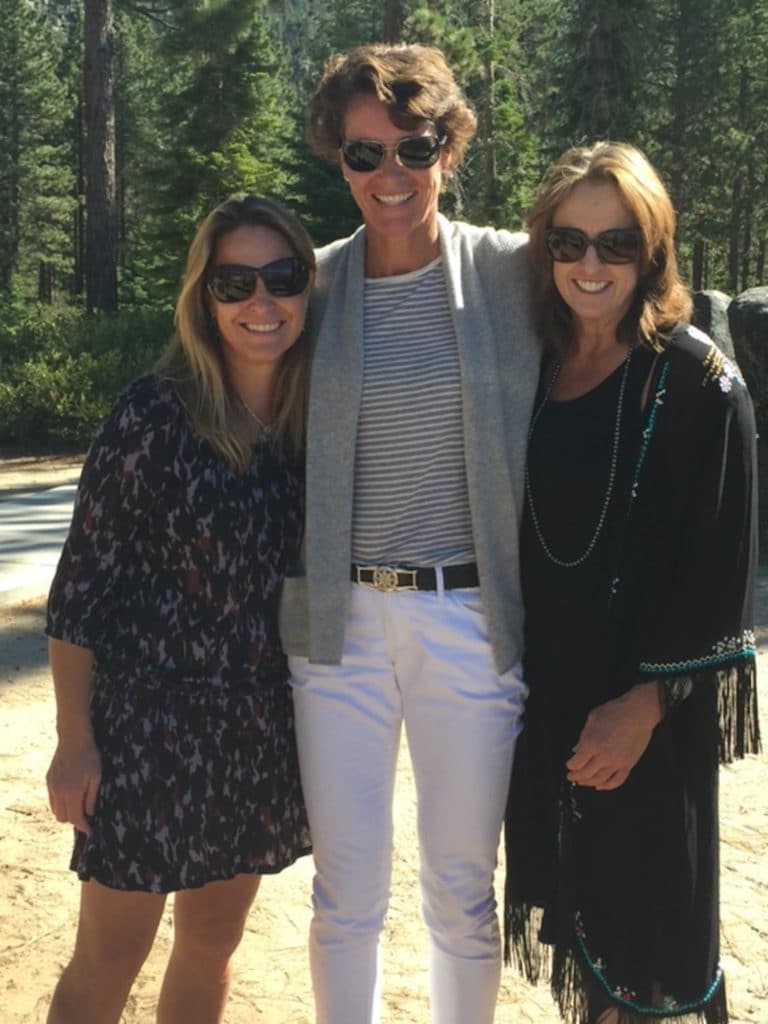
Patty also understands the weight of the NCAA in public awareness. “In 30 years in corporate America, if I tell people I was on the US national team and raced World Cup, and I won NCAAs, all they do is gravitate to the NCAA win because they can relate to it. They understand that.” She wants to capitalize on the fact that the level of collegiate skiing has dramatically improved, allowing athletes to pursue the elite level during or after their NCAA careers. To the complaint that the US Ski Team has not supported athletes going to college, Patty simply says, “That stops now.” She sees reducing friction around college skiing as an easy win, accomplished by first understanding the athlete’s wishes. Her own jarring experience informs her approach. “It was heart-wrenching for me to have to make that decision to leave. So that experience for me is something that I am personally committed to changing.”
Last spring, six US Ski Team athletes attended Dartmouth, and rather than having all of them fly to Park City for physical testing, the team sent a conditioning coach to Hanover to work with them on site. For next season, two national team athletes want to also compete for their Dartmouth ski teams. Patty immediately offered her support and established a framework of three basic principles to hold the athletes and their coaches accountable. It involves clear three-way communication about goals and expectations, collaboration through inevitable obstacles, and documentation. “What I want is an iterative conversation,” says Patty, which starts with a plan.
THE INSIDE LINE
When she looks at how ski racing shaped her career, Patty credits the challenges more than the successes. Her role, in many cases, is not to eliminate the difficulties but to help athletes overcome them. Those include things like pursuing academic and athletic goals concurrently, as well as things like coming back from serious injury, something in which she is also well-versed. Patty collided with a steel pole as a young ski racer, sustaining a broken femur in one leg and a compound tib/fib fracture in the other. The situation required her to spend 2 ½ months in traction and five months bedridden. She vividly remembers the fear of getting back on snow. “We have a world-class operation here [at the COE] to help athletes get back, but a big part of that also is the mental component.”
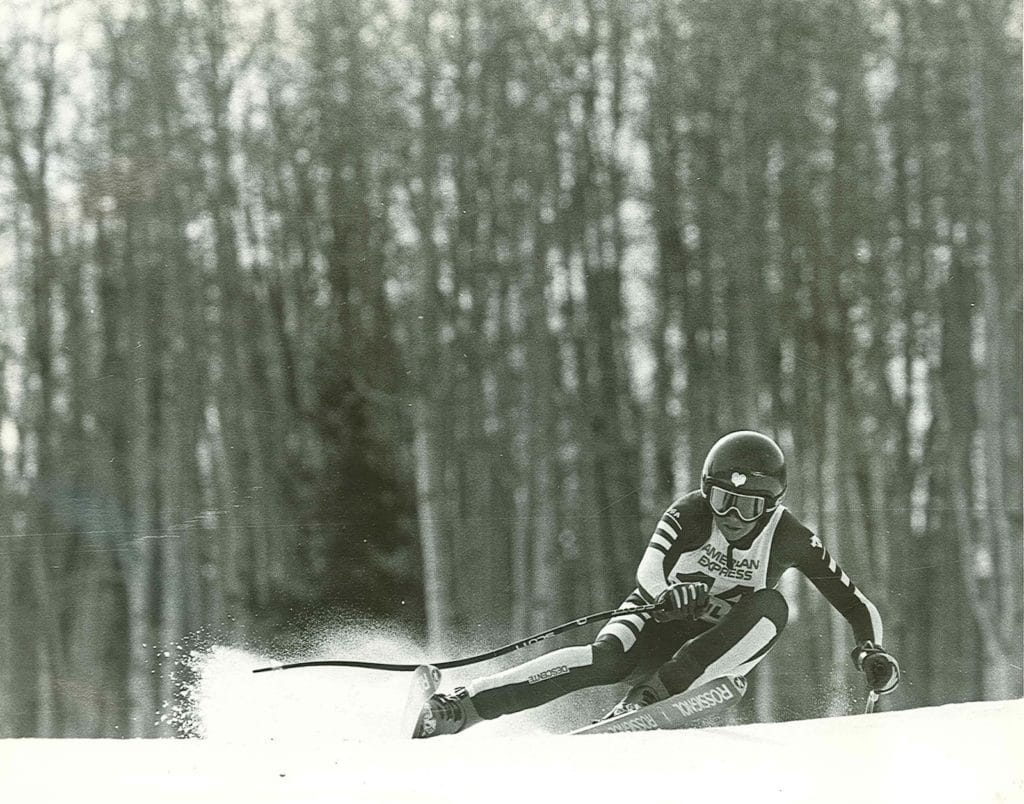
It is all part of the healthy environment key to optimal performance. “We can make sure that coaches are getting the maximum output of every athlete in a thoughtful, caring way.” Additionally, Patty, who is gay, was in her day part of a team environment she now sees was highly homophobic. “I probably participated in that as well,” she admits, adding, “We are so changing that. We want to make USSS super, super inclusive. The work has already started, but I’m going to light a fire under it because we just have to do it.”
THE NEW MATH
When Patty describes her vision, it does not include medal targets for the next quad or numerical performance markers. That, however, by no means softens her aspirations for top results. “Don’t get me wrong,” Patty insists, “I want to win races and win medals—lots of them. But without a doubt, the way to get there is by putting in place the right culture, the right athlete support system and the right development programs that help the athletes achieve their dreams, because if the athletes are achieving their dreams, we’re all winning. You know, it’s a pretty simple equation.”
Related Post
